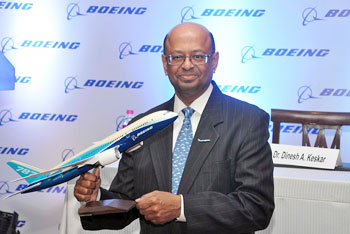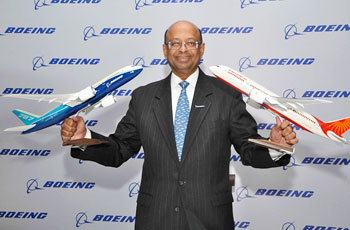INDIAN ARMED FORCES CHIEFS ON OUR RELENTLESS AND FOCUSED PUBLISHING EFFORTS

SP Guide Publications puts forth a well compiled articulation of issues, pursuits and accomplishments of the Indian Army, over the years

"Over the past 60 years, the growth of SP Guide Publications has mirrored the rising stature of Indian Navy. Its well-researched and informative magazines on Defence and Aerospace sector have served to shape an educated opinion of our military personnel, policy makers and the public alike. I wish SP's Publication team continued success, fair winds and following seas in all future endeavour!"

Since, its inception in 1964, SP Guide Publications has consistently demonstrated commitment to high-quality journalism in the aerospace and defence sectors, earning a well-deserved reputation as Asia's largest media house in this domain. I wish SP Guide Publications continued success in its pursuit of excellence.
- Indian Air Force Aims for Full Indigenous Inventory by 2047 — Air Chief Marshal A.P. Singh
- Rajnath Singh assumes charge as Defence Minister for the second consecutive term
- Interim Defence Budget 2024-25 — An Analysis
- Union Defence budget 2024
- Prime Minister Modi Flies in the LCA Tejas
- New Chapter in India-Italy Defence Ties
- Airpower beyond Boundaries
Dreamliner is a safe airplane: Boeing


Amidst reports of technical glitches found in the 787 Dreamliners, Air India has received its 10th aircraft recently and is planning to deploy the aircraft in more international routes. A few days prior to the delivery on October 30, Dinesh Keskar, Vice President, Sales, Asia-Pacific and India, Boeing Commercial Airplanes, while answering to media queries on the technical flaws experienced in the Air India Dreamliners, said that the company has an operations control system based in Seattle which monitors every 787 aircraft in flight across the world and takes corrective action. While he expressed concern over the technical glitches on the aircraft, he said that it is a safe airplane and has never caused issues with the safety of passengers. He added that Boeing is in constant touch with Air India and has deputed experts from the company and the vendors to help resolve such issues.
Giving clarification on the incident of a panel of a Dreamliner aircraft falling off, he said, “It was just an access panel and not the pressurised one. There was no risk or danger to the aircraft and the passengers. Investigation by the Directorate General of Civil Aviation (DGCA) is on and once the report is out, we will be able to say more. But I would like to make three things clear. “First, the panel fell off at Bangalore airport. Second, the panel has been recovered and, third, it never put the lives of passengers or the aircraft at risk,” he said. On the recent incident of return of the Air India Dreamliner flight to New Delhi to Melbourne airport after takeoff, he said that it was because of spoiler failure.
Despite the gloomy economic and civil aviation scenario in India, Keskar said that Boeing sticks to its 20-year forecast for sale of commercial jets in South Asia. “We are still definite about meeting our forecast,” replying to a question asked by Jayant Baranwal, Editor-in-Chief, SP’s Aviation. He added that there will be a demand for efficient airplanes which would reduce fuel consumption. “No matter what the fuel price is, with availability of more fuel efficient aircraft, demand for new aircraft will rise.” It may be noted that Boeing has forecast a long-term demand for 35,280 new airplanes, valued at $4.8 trillion by 2032. Keskar said, “Boeing develops and continues to develop new fuel-efficient airplanes to address the needs of our customers such as those in India.”
On the state of the Indian airline industry, he said that despite better management of capacity, airline profitability in India continues to be challenged by currency weakness and high fuel cost. “Capacity growth has been restrained but there is substantial yield decrease during the lean system. The yields are currently improving, though high fuel prices and rupee depreciation are increasing costs; adversely impacting dollar-based costs such as fuel, lease rentals and spares.” But Keskar said that Boeing is bullish about India. “The growing middle class will be a major contributor.” On the entry of newer airlines like the Tata-SIA, he opined that newer airlines will bring only little change in the civil aviation scenario of the country. I am a proponent of profitable growth.”
Keskar said that Boeing is developing new fuel efficient airplanes to address the needs of its customers. The new aircraft would be low in operating cost; give unprecedented passenger experience, environmentally progressive; have long-range performance; would be fast, reliable and have operational commonality. Giving updates on the current and future aircraft developments in Boeing, he said that the 737 MAX with the Boeing Sky Interior will deliver 400-500nmi more range and 40 per cent lower noise footprint at 14 per cent lower fuel costs; the 787 production system is stabilising and the production rates are being raised to 13 a month, the 787-9 is into its certification and EIS phase and the 787-10 programme has been launched; and that the Boeing 777X will be the most fuel efficient airplane serving the higher end of the market with further improvement in the passenger experience that is already being seen in the 787 Dreamliner. He further informed that the Boeing airplanes can use biofuels without any change in the engines.
Keskar said that the biggest improvement in the 737MAX compared to 737NG is in the winglets which will help reduce fuel consumption by another 1.5 per cent. “The aircraft will burn 14 per cent less fuel and have a 40 per cent smaller noise footprint.” The design phase of the aircraft will start next year and the first aircraft would be ready by 2015. SpiceJet, Jet Airways and Air India Express are the three target customers for the new Boeing 737 MAX planes.
On being asked about the status of the maintenance repair and overhaul (MRO) facility at Nagpur, Keskar said that incessant rains slowed down the work but it would become operational by the second quarter of next year. The facility being built in collaboration with Air India is being constructed by Larsen and Toubro (L&T).





